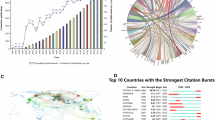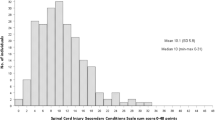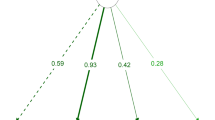Abstract
Introduction
Neuropathic pain is a common complication of spinal cord injury (SCI), and is notoriously difficult to adequately treat. Gunshot wounds (GSW) near the spinal cord may cause intractable chronic pain through spinal/nerve root transection, or reactive tissue formation resulting in nerve root compression from retained bullet fragments (RBF).
Case presentation
This case report describes a 30-year-old man with a T12 AIS B incomplete spinal cord injury with paraplegia secondary to multiple GSW who presented with severe bilateral lower extremity dysesthesias and muscle spasms. Symptoms failed to improve with oral antispasmodic medications. After being diagnosed with Complex regional pain syndrome (CRPS) type I secondary to an SCI via GSW, he underwent a spinal cord stimulator (SCS) trial, which improved his symptoms by greater than 80%.
Discussion
Neuropathic pain refractory to conservative treatment may benefit from SCS. Effects of therapy go beyond gate-theory in SCI patients, and may benefit patients at the cellular and molecular level. Our case demonstrates the effectiveness of SCS treatment in a patient who developed CRPS type 1 after GSW resulting in SCI.
Similar content being viewed by others
Log in or create a free account to read this content
Gain free access to this article, as well as selected content from this journal and more on nature.com
or
Data availability
All data underlying the results are available as part of the article. Data was derived directly from the patient’s medical record and no additional databases were used.
References
National Spinal Cord Injury Statistical Center, Facts and Figures at a Glance. Birmingham, AL: University of Alabama at Birmingham, 2021.
Lasfargues JE, Custis D, Morrone F, Carswell J, Nguyen T. A model for estimating spinal cord injury prevalence in the United States. Paraplegia. 1995;33:62–68.
de Barros Filho TE, Cristante AF, Marcon RM, Ono A, Bilhar R. Gunshot injuries in the spine. Spinal Cord. 2014;52:504–10.
Sidhu GS, Ghag A, Prokuski V, Vaccaro AR, Radcliff KE. Civilian gunshot injuries of the spinal cord: a systematic review of the current literature. Clin Orthop Relat Res. 2013;471:3945–55.
Khorasanizadeh M, Yousefifard M, Eskian M, Lu Y, Chalangari M, Harrop JS, et al. Neurological recovery following traumatic spinal cord injury: a systematic review and meta-analysis. J Neurosurg Spine. 2019;30:683–99.
Waters RL, Adkins RH. The effects of removal of bullet fragments retained in the spinal canal: a collaborative study by the national spinal cord injury. Spine. 1991;16:934–9.
Siddall PJ. Management of neuropathic pain following spinal cord injury: now and in the future. Spinal Cord. 2009;47:352–9.
D’Angelo R, Morreale A, Donadio V, Boriani S, Maraldi N, Plazzi G, et al. Neuropathic pain following spinal cord injury: what we know about mechanisms, assessment and management. Eur Rev Med Pharm Sci. 2013;17:3257–326.
Yezierski RP. Spinal cord injury pain: spinal and supraspinal mechanisms. J rehabilitation Res Dev. 2009;46:95–107.
Pattany PM, Yezierski RP, Widerström-Noga EG, Bowen BC, Martinez-Arizala A, Garcia BR, et al. Proton magnetic resonance spectroscopy of the thalamus in patients with chronic neuropathic pain after spinal cord injury. AJNR Am J Neuroradiol. 2002;23:901–5.
Prévinaire JG, Nguyen JP, Perrouin-Verbe B, Fattal C. Chronic neuropathic pain in spinal cord injury: efficiency of deep brain and motor cortex stimulation therapies for neuropathic pain in spinal cord injury patients, Ann of Phys and Rehabil Med. 2009;52:188–93. https://doi.org/10.1016/j.rehab.2008.12.002.
Guy S, Mehta S, Casalino A, Cote I, Kras-Dupuis A, Moulin DE, et al. The CanPain SCI clinical practice guidelines for rehabilitation management of neuropathic pain after spinal cord: recommendations for treatment. Spinal Cord. 2016;54:S14–S23.
Caylor J, Reddy R, Yin S, Cui C, Huang M, Huang C. et al. Spinal cord stimulation in chronic pain: evidence and theory for mechanisms of action. Bioelectron Med. 2019;5:12.
Dombovy‐Johnson ML, Hunt CL, Morrow MM, Lamer TJ, Pittelkow TP. Current evidence lacking to guide clinical practice for spinal cord stimulation in the treatment of neuropathic pain in spinal cord injury: a review of the literature and a proposal for future study. Pain Pract. 2020;20:325–35.
Kumar K, Toth C, Nath RK, Laing P. Epidural spinal cord stimulation for treatment of chronic pain-some predictors of success. A 15-year experience. Surg Neurol. 1998;50:110–20.
Keel JC, Lau ME, Gulur P. Spinal cord stimulation for radicular pain following retained bullet in the spinal canal. Pain Physician. 2013;16:E103–E106.
Biktimirov A, Bryukhovetskiy I, Sharma A, Sharma HS. Spinal cord stimulation and intrathecal baclofen therapy for patients with severe spasticity after spinal cord injury. Prog Brain Res. 2020;258:79–99.
Author information
Authors and Affiliations
Contributions
RR was contributed the conception of the work, data collection, drafting the article, critical revisions, and final approval of the version to be published. EA contributed data collection, drafting the article, and critical revisions. MA contributed critical revisions of the article. DG contributed critical revisions of the article. CP contributed critical revisions of the article.
Corresponding author
Ethics declarations
Competing interests
The authors declare no competing interests.
Additional information
Publisher’s note Springer Nature remains neutral with regard to jurisdictional claims in published maps and institutional affiliations.
Supplementary information
Rights and permissions
About this article
Cite this article
Rosales, R., Amirianfar, E., Appeadu, M. et al. Spinal cord stimulation for neuropathic pain following traumatic spinal cord injury: a case report. Spinal Cord Ser Cases 8, 80 (2022). https://doi.org/10.1038/s41394-022-00546-2
Received:
Revised:
Accepted:
Published:
DOI: https://doi.org/10.1038/s41394-022-00546-2
This article is cited by
-
Comparative outcomes of microsurgical dorsal root entry zone lesioning (DREZotomy) for intractable neuropathic pain in spinal cord and cauda equina injuries
Neurosurgical Review (2025)
-
Baclofen/gabapentin/venlafaxine
Reactions Weekly (2022)



